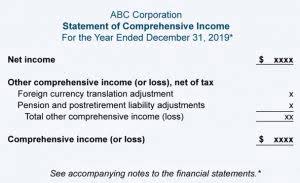Content

Suppose a lawsuit is filed against a company, and the plaintiff claims damages up to $250,000. It’s impossible to know whether the company should report a contingent liability of $250,000 based solely on this information. Here, the company should rely on precedent and legal counsel to ascertain the likelihood of damages. The term “material” is essentially synonymous with “significant” in this how to record a contingent liability context. A contingent liability can harm a company’s financial health and performance; hence, knowing about the liability can influence the decision-making of various users of the company’s financial records. The Full Disclosure Principle states that all significant and relevant facts about a company’s financial performance and health should be disclosed in its financial statements/records.
In our case, we make assumptions about Sierra Sports and build our discussion on the estimated experiences. These are questions businesses must ask themselves when exploring contingencies and their effect on liabilities. Another fantastic example of contingent liability would be product warranties. Let’s say a mobile phone manufacturer produces many mobiles and sells them with a brand warranty of 1 year. The principle of prudence is a crucial principle that states that a company must not record future anticipated gains into the books of accounts, but any expected losses must be accounted for. Although contingent liabilities are necessarily estimates, they only exist where it is probable that some amount of payment will be made.
Record a Contingent Liability
The same idea applies to insurance claims (car, life, and fire, for example), and bankruptcy. There is an uncertainty that a claim will transpire, or bankruptcy will occur. If the contingencies do occur, it may still be uncertain when they will come to fruition, or the financial implications.

Because contingent liabilities are uncertain, it is difficult to quantify or estimate the impact they may have on a company’s share price. Assuming that the loss contingency is “probable” and can be reasonably estimated, then a journal entry should be recorded to accrue the liability. The journal entry would be to debit legal expense and credit to record the legal liability.
Educational material on applying IFRSs to climate-related matters updated
First, it must be possible to estimate the value of the contingent liability. If the value can be estimated, the liability must have more than a 50% chance of being realized. Qualifying contingent liabilities are recorded as an expense on the income statement and a liability on the balance sheet. So the company needs to estimate the warranty expense and record it into the financial statement. The journal entry is debiting warranty expense and credit contingent liability. Google, a subsidiary of Alphabet Inc., has expanded from a search engine to a global brand with a variety of product and service offerings.
- Even if the outcome is based on the probability of occurrence of the event, it is considered an actual liability.
- Some examples of such liabilities would be product warranties, lawsuits, bank guarantees, and changes in government policies.
- Other examples include liquidated damages, debt guarantees, government investigations, and pending lawsuits.
- Both represent possible losses to the company, and both depend on some uncertain future event.
- The accounting rules ensure that financial statement readers receive sufficient information.
- The contingent liability may arise and negatively impact the ability of the company to repay its debt.
This shows us that the probability of occurrence of such an event is less than that of a possible contingency. Since a contingent liability can potentially reduce a company’s assets and negatively impact a company’s future net profitability and cash flow, knowledge of a contingent liability can influence the decision of an investor. Contingent assets are assets that are likely to materialize if certain events arise. These assets are only recorded in financial statements’ footnotes as their value cannot be reasonably estimated. As a general rule, the impact of these liabilities on a company’s cash flow should be accounted for in a financial model if the likelihood of the contingent liability becoming an actual liability is more than 50%. In a few cases, an analyst may present two scenarios, one that includes the impact on the company’s cash flow and one that does not.
Difference Between Types of Liabilities
A possible contingency is when the event might or might not happen, but the chances are less than that of a probable contingency, i.e., less than 50%. This liability is not required to be recorded in the books of accounts, but a disclosure might be preferred. It does not make any sense to immediately realize a contingent liability – immediate realization signifies the financial obligation has occurred with certainty.
